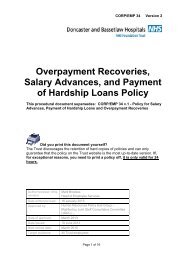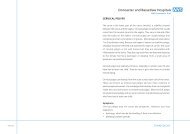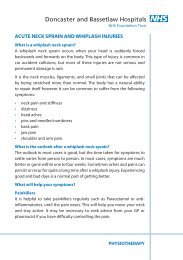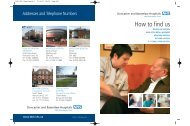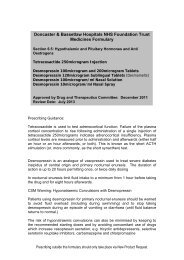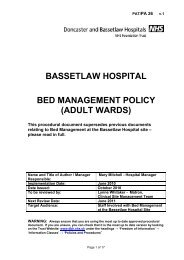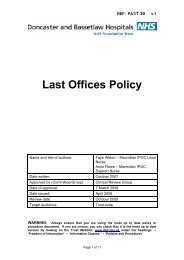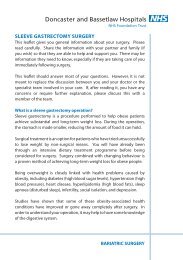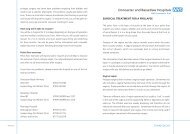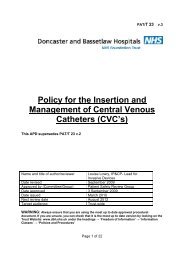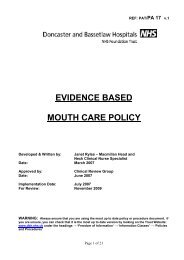VARIANT CREUTZFELDT-JAKOB DISEASE (vCJD) AND ...
VARIANT CREUTZFELDT-JAKOB DISEASE (vCJD) AND ...
VARIANT CREUTZFELDT-JAKOB DISEASE (vCJD) AND ...
Create successful ePaper yourself
Turn your PDF publications into a flip-book with our unique Google optimized e-Paper software.
PAT/IC 4 v.3<br />
ix)<br />
Dental treatment of patients with,or at risk of CJD or <strong>vCJD</strong><br />
The risks of transmission of infection from dental instruments, used for routine dental<br />
treatment, are thought to be very low provided optimal standards of infection control and<br />
decontamination are maintained. Instruments labelled by manufacturers as “single use”<br />
should not be re-used under any circumstances.<br />
See advice from the Chief Dental Officer in 2007 for further guidance<br />
Dentists are advised to ensure that:<br />
• Endodontic reamers and files are treated as single use.<br />
• Highest standards of decontamination are observed for all dental instruments.<br />
• Manufacturers’ decontamination instructions are followed for all instruments and<br />
where instruments are difficult to clean, single use instruments should be used<br />
where possible.<br />
x) List of workers exposed to TSE agents<br />
Control of Substances Hazardous to Health (COSHH) regulations require employers to<br />
keep a list of employees who work with TSE agents, such as:<br />
• Staff performing invasive clinical procedures on patients suspected to be suffering<br />
from CJD of any type, particularly where there is a risk of exposure to central<br />
nervous tissue, eye tissue or other tissues known to contain CJD infectivity.<br />
• Laboratory staff handling tissue specimens from patients with CJD.<br />
• Staff undertaking post-mortem examinations of patients who have died of<br />
CJD/<strong>vCJD</strong> or where CJD/<strong>vCJD</strong> is suspected.<br />
The infromation recorded should include the type of work done and, where known, any<br />
specific exposure, accident or incident. The list must be kept for 40 years after the last<br />
known exposure and may be kept with the individual’s occupational health record.<br />
11. AFTER DEATH<br />
On the death of a patient defined in Table 1, the removal of the body from the ward to the<br />
mortuary should be carried out using standard infection control measures. A body bag is<br />
recommended for transportation to the mortuary, in line with normal procedures where<br />
there is a known infection risk, and mortuary staff notified of this risk.<br />
Post-mortem examination may be required to confirm a clinical diagnosis and cause of<br />
death in patients with suspected CJD or <strong>vCJD</strong>. Such procedures have the potential to<br />
expose mortuary staff to tissues containing high levels of infectivity and must be discussed<br />
with the Consultant Histopathologist and Infection Prevention and Control Team. Detailed<br />
guidance is available in “Transmissible spongiform encephalopathy agents : Safe working<br />
and the prevention of infection” – Annex H. Department of Health; June 2003.<br />
Page 20 of 22



